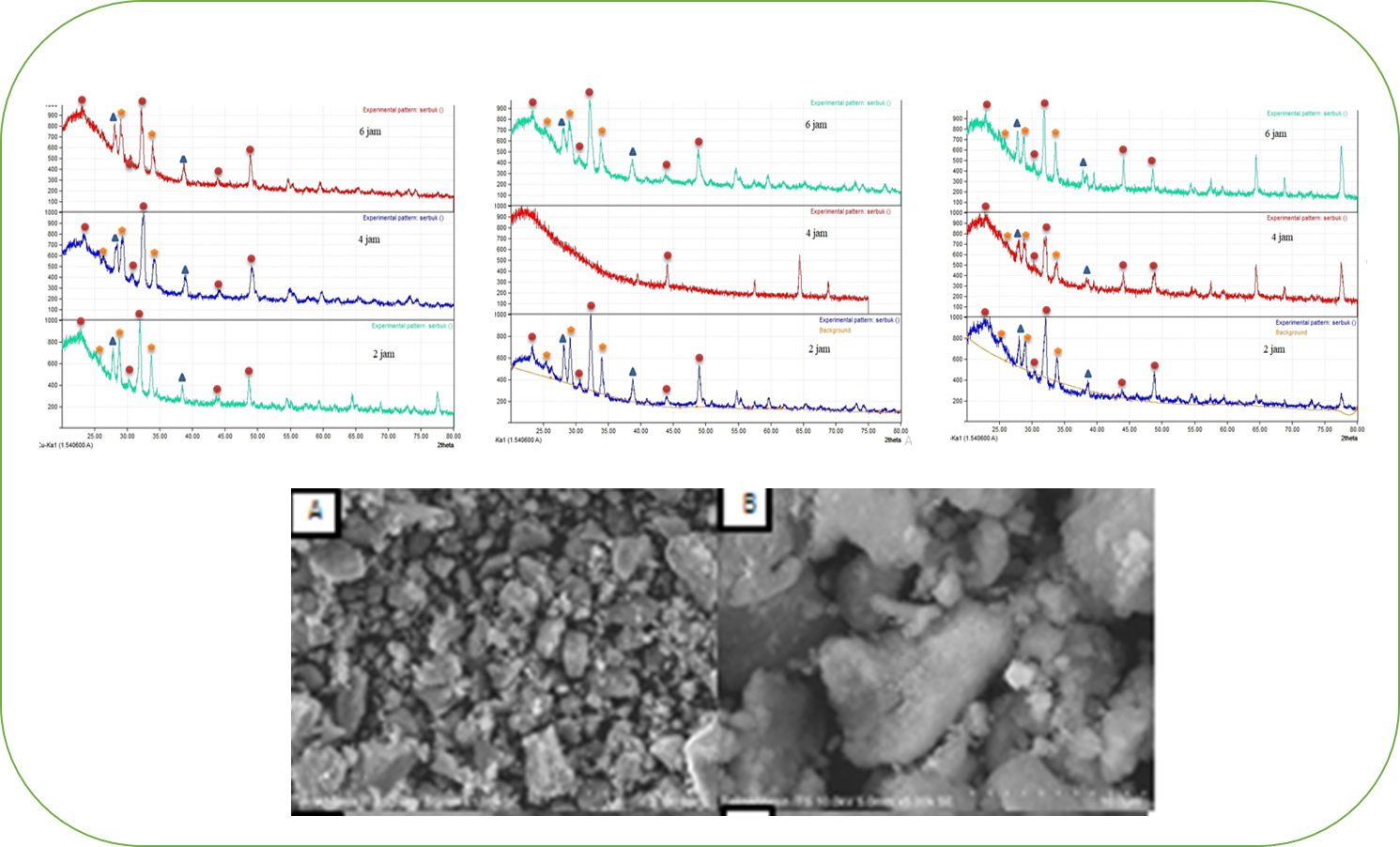A Synthesis Nanosilica of Bamboo’s Leaf (Bambusa Sp.) by Using Hydrothermal Method
Sintesis Nanosilika Daun Bambu (Bambusa sp.) Menggunakan Metode Hidrotermal
Abstract
The existence of bamboo plants is very much in Indonesia. The part that is mostly used is the stem, while the leaves are left to become waste. Even though the silica content in bamboo leaves is quite high. Research on the synthesis of nanosilica from bamboo leaves has been carried out using the hydrothermal method with variations in temperature and time. There are several nanosilica synthesis methods, including sol-gel, coprecipitation, polymeric gel and hydrothermal. The hydrothermal method is the easiest method of execution because it does not require large costs but produces nanosilica with a high level of purity. The results showed that the nanosilica produced were multiphase, namely the cristobalite phase which was marked by the appearance of peaks at angles of 2θ 23o, 32o, 44o, and 49o; the quartz phase characterized by the appearance of peaks at an angle of 2θ 28o and 38o; the coesite phase is characterized by the appearance of peaks at an angle of 2θ 29o and 33o. It was concluded that the temperature and hydrothermal time had an effect on the characteristics of the nanosilica produced. The smallest nanosilica size was 15.40 nm, formed at 120oC for 6 hours, while the largest nanosilica size was 27.44 nm, formed at 180oC for 6 hours.
Keywords: bamboo leaf, hydrothermal, nanosilica






















